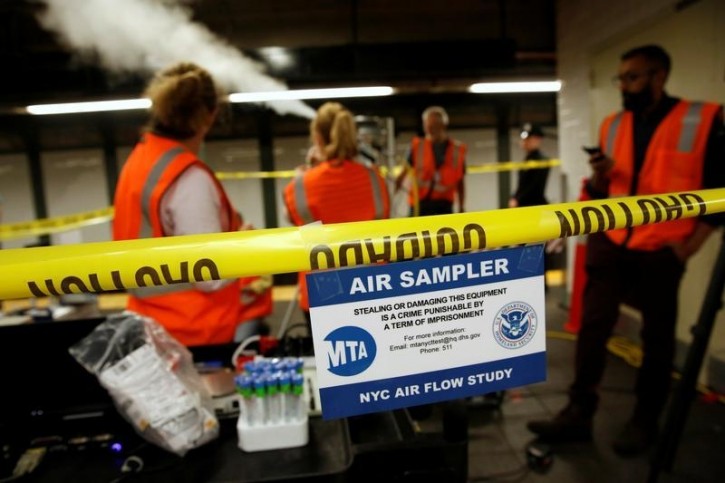 New York – Men in orange vests released a harmless, invisible, odorless gas on a subway platform at Grand Central terminal on Monday, part of a test of how air moves through tunnels and — potentially — how a biological contaminant would travel through the nation’s biggest transit system during a terrorist attack.
New York – Men in orange vests released a harmless, invisible, odorless gas on a subway platform at Grand Central terminal on Monday, part of a test of how air moves through tunnels and — potentially — how a biological contaminant would travel through the nation’s biggest transit system during a terrorist attack.
Subscribe to our Daily Roundup Email
There is no health risk. The gas contains tracing particles that look like drops of perfume from an atomizer before quickly dissipating.
Detectors have been installed in more than 55 stations and some outdoor spots to see where the vapors go. The collection boxes pull air through filters and capture particles into bags for analysis. About 12,000 samples will be taken this week, federal officials said.
Donald Bansleben, program manager of the Chemical and Biological Defense Division of the U.S. Department of Homeland Security, told reporters on the subway platform that the exercise is meant to simulate the release of a biological agent.
“We’re not aware of any specific threats against the subway. We are just trying to make sure that we are prepared,” he said.

Researchers also are watching for how and where the particles settle, and whether they re-disperse into the air as trains zoom by.
The test vapors are called perfluorocarbon tracer gases and present no health or environmental hazard to the public, officials said. Gas will be released for five days at two of three major transit hubs: Grand Central, Times Square or Penn Station. About 5.6 million people ride the New York City subway on an average weekday.
Bansleben said it will take months to analyze the results, which will be used to help emergency managers and responders develop strategies on how best to respond.
“There will be a lot of information that is not being made public. I think we do want to be careful with what we do say,” he said.
Similar studies have been done in Washington D.C., Boston and one in New York in 2013 that focused on chemical, not biological, agents, officials said. That study was run in partnership with the city’s transit agency, police department and the U.S. Department of Energy’s Brookhaven National Laboratory. There also was an airflow study in New York in 2005.

What a waste of time and money. Passengers have been releasing gas for years and no one died!
It only took them 15 yeas or so to figure out that the NYC subway system is susceptible to a gas attack. If I didn’t know about other things in place down there, I’d be very scared.
I remember the army did a test like this in the Vietnam era. This is old news.